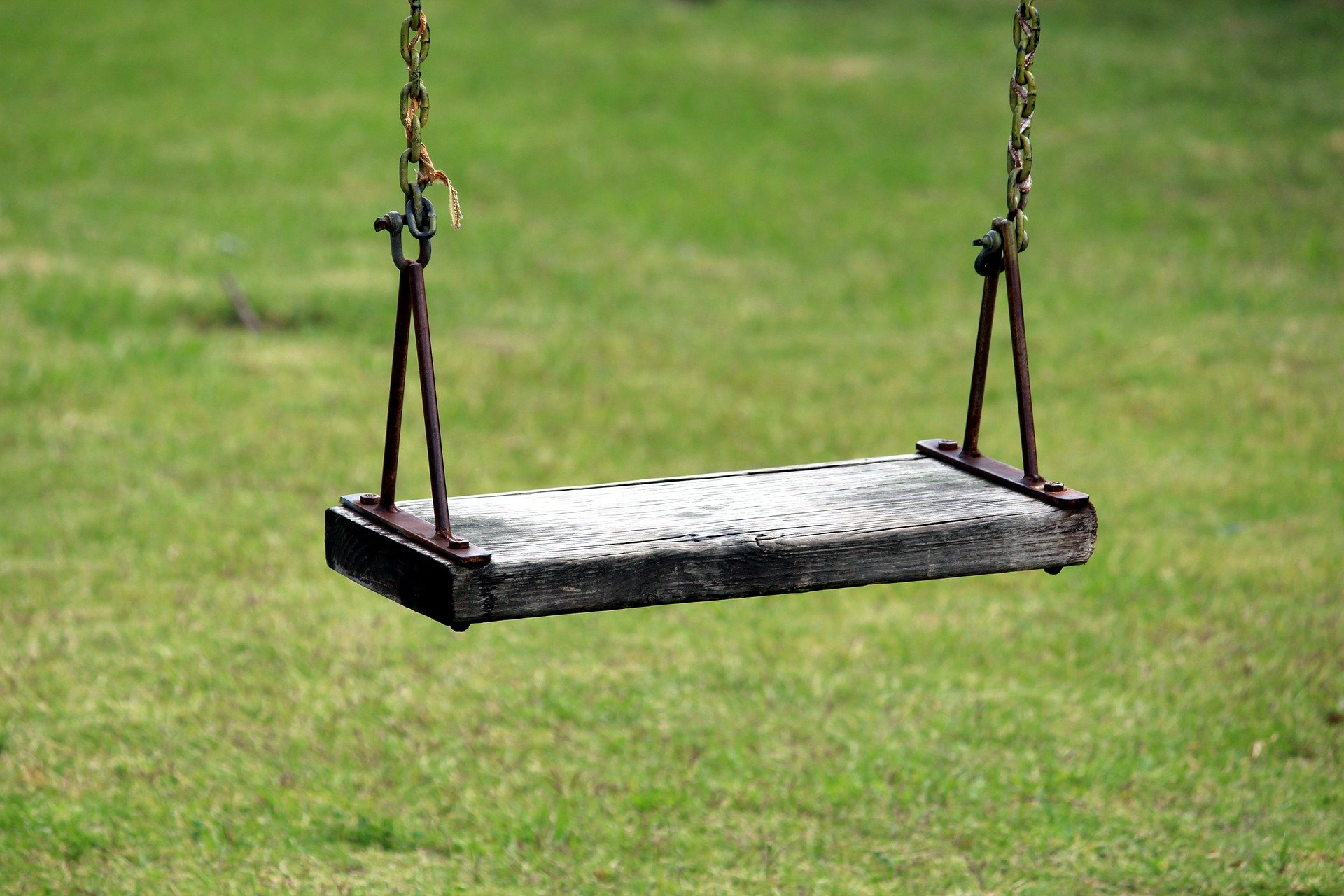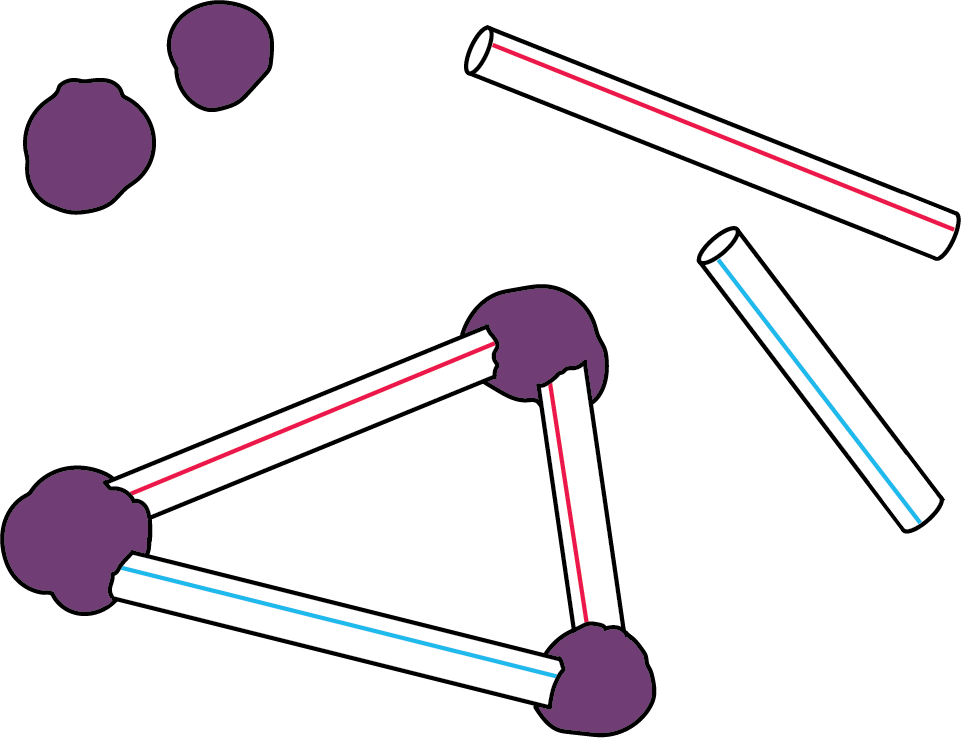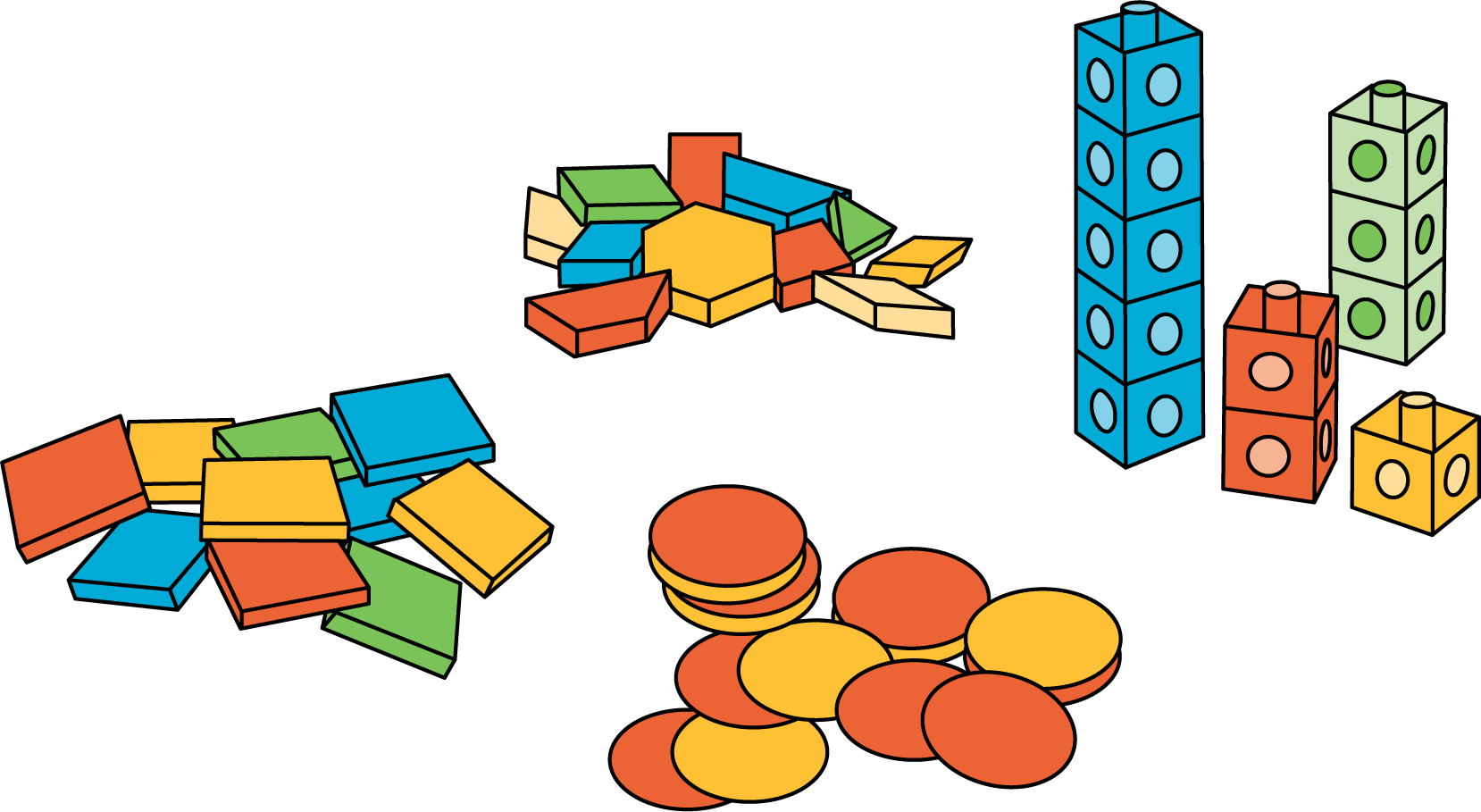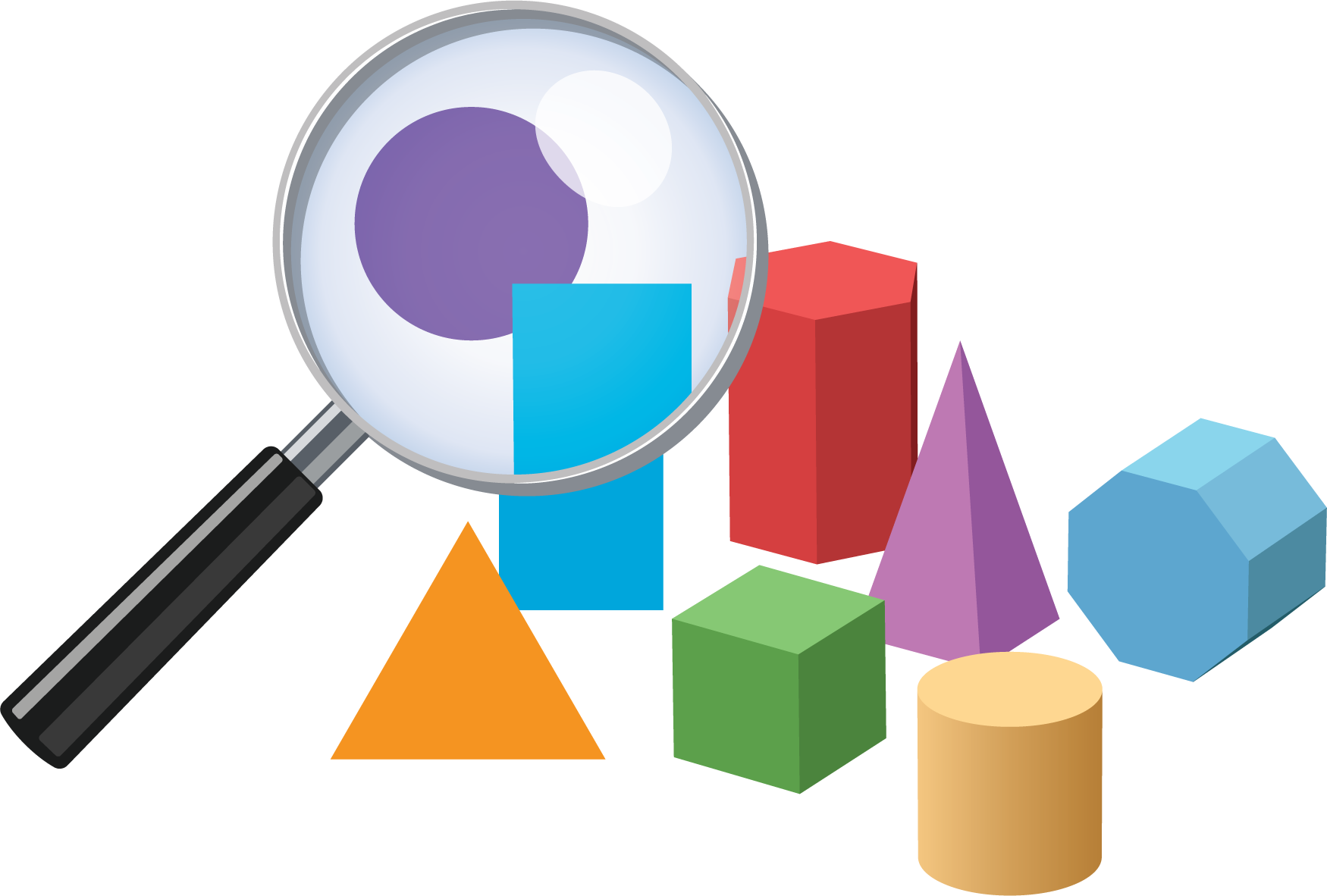Lesson 9
Shapes Are Everywhere
Warm-up: Which One Doesn’t Belong: Rectangles, Squares, and Triangles (10 minutes)
Narrative
Launch
- Groups of 2
- Display the image.
- “Pick one that doesn’t belong. Be ready to share why it doesn’t belong.”
- 1 minute: quiet think time
Activity
- “Discuss your thinking with your partner.”
- 2–3 minutes: partner discussion
- Share and record responses.
Student Facing
Which one doesn’t belong?




Student Response
For access, consult one of our IM Certified Partners.
Activity Synthesis
- Display the image of the square.
- “Noah said that this shape doesn’t belong because it is not a rectangle. What do you think?”
- 30 seconds: quiet think time
- Share responses.
- “A square is a special kind of rectangle.”
Activity 1: School Shape Walk (15 minutes)
Narrative
The purpose of this activity is for students to identify and name shapes in the environment. The shape walk can take place in the playground, library, or another area of the school. It may be easier for students to use their recording sheet if it is on a clipboard.
When students recognize mathematical features of objects in the real world, they model with mathematics (MP4).
Supports accessibility for: Conceptual Processing
Required Materials
Materials to Gather
Launch
- Groups of 2
- “We are going to take a walk around the playground. Look for examples of triangles, rectangles, and circles around the playground. Tell your partner about the shapes you find and draw pictures or write words to record what you find.”
Activity
- 10 minutes: shape walk
- “Write a number to show how many of each shape you found.”
- 2 minutes: independent work time
Student Facing








Synthesis:

Student Response
For access, consult one of our IM Certified Partners.
Activity Synthesis
- Invite students to share their recording sheets and the shapes that they found.
- Display the image or an example from the playground:

- “Han found this swing on the playground. Where should he draw this on the recording sheet?” (The swing looks like a rectangle so he could draw it with the rectangles. The sides of the swing look like triangles.)
Activity 2: Create the Shape (15 minutes)
Narrative
The purpose of this activity is for students to create shapes from components. Students should have access to different materials to create shapes, such as straws from a previous lesson, pipe cleaners, string, or other art supplies. Dot paper is printed in the student workbook for students who choose to draw their shape. As students ask and answer questions about the shapes in the activity synthesis, they have an opportunity to name shapes and informally describe attributes of shapes using precise language (MP6).
Advances: Representing, Conversing
Required Materials
Materials to Gather
Required Preparation
- Students need the straws from the previous lesson and pipe cleaners, string, or other art supplies.
Launch
- Give students access to materials to create shapes, such as straws, pipe cleaners, string, and crayons or colored pencils.
- “What was your favorite shape that you found on our shape walk?”
- 30 seconds: quiet think time
- Share responses.
- “Use any materials to make or draw your favorite shape that you found on the shape walk.”
Activity
- 4 minutes: independent work time
Student Facing

Student Response
For access, consult one of our IM Certified Partners.
Activity Synthesis
- “Half the class will stay by the shape they created. Half the class will walk around and look at all the shapes. Ask each person one question about their shape.”
- 5 minutes: gallery walk
- “Now the other half of the class will walk around to see the shapes. Remember to ask each person one question about their shape.”
- 5 minutes: gallery walk
Activity 3: Centers: Choice Time (15 minutes)
Narrative
The purpose of this activity is for students to choose from activities that offer practice with number and shape concepts.
Students choose from any stage of previously introduced centers.
- Build Shapes
- Counting Collections
- Which One
- Picture Books
- Bingo
- Shake and Spill
Required Materials
Materials to Gather
Required Preparation
- Gather materials from:
- Build Shapes, Stages 1 and 2
- Counting Collections, Stage 1
- Which One, Stage 1
- Picture Books, Stages 1–3
- Bingo, Stages 1 and 2
- Shake and Spill, Stages 1 and 2
Launch
- “Today we are going to choose from centers we have already learned.”
- Display the center choices in the student book.
- “Think about what you would like to do.”
- 30 seconds: quiet think time
Activity
- Invite students to work at the center of their choice.
- 10 minutes: center work time
Student Facing
Choose a center.
Build Shapes

Counting Collections

Which One

Picture Books

Bingo

Shake and Spill

Activity Synthesis
- “What is something you do well while working in centers? What is something you want to continue working on?”
Lesson Synthesis
Lesson Synthesis
“In this section, we have learned all about shapes. What have you learned about shapes?”
Share and record responses.
Cool-down: Unit 3, Section A Checkpoint (0 minutes)
Cool-Down
For access, consult one of our IM Certified Partners.
Student Section Summary
Student Facing
In this section, we noticed shapes in the world around us.
We described and compared shapes.

This shape looks like a door that is crooked.
It has 4 corners.

This shape has 2 long sides and 1 shorter side.
The shapes are alike because they have straight sides.
The shapes are different because one has 4 sides and one has 3 sides.
We learned the names of these shapes:
circle

triangle

rectangle

square
